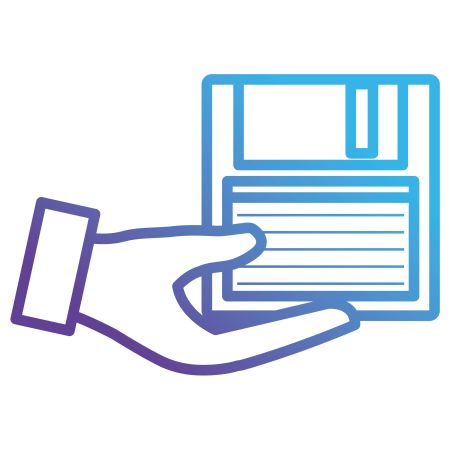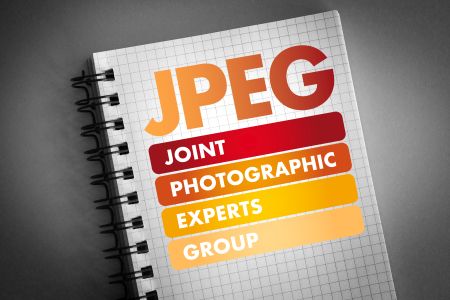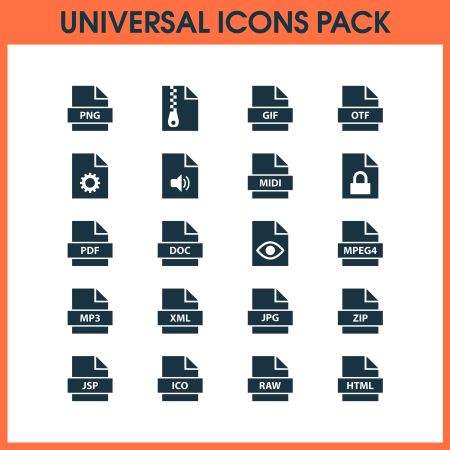Image formats at a glance - What are the differences?
Image formats such as JPG or PNG are familiar to most people. What many users do not know, however, are the differences and advantages that the various formats offer.
For many users, and perhaps also for you, it is quite difficult to see exactly how a JPG file differs from a PNG file or a GIF file. It is worth taking a closer look at the different image formats. Because each image format has its own advantages, but also disadvantages and is tailored to various areas of application.
In this article, we would like to introduce the most common image formats to you as Fotoalben-Discount and also address the question of when you should choose which image format.

Photo formats: What are they?
Before we take a detailed look at the common image formats, it is worth taking a look at the differences between pixel and vector graphics.
As you might guess from the name, pixel graphics are made up of pixels. The greater the number of pixels in an image, the better the resolution and quality. The big disadvantage of this type of graphic is that any scaling is accompanied by an enormous loss of quality. A disadvantage that vector graphics do not have.
Vector-based graphics are composed of two-dimensional graphics. Because the colour, dimensions and position of the objects are described, this type of graphic can be scaled as desired without any loss of quality. For this reason, this image format is particularly suitable for graphics that are used in different sizes. This is the case, for example, with logos or other materials used for marketing purposes.

Image formats: Making the right choice
Which image format is the right one depends on the intended use. Therefore, the following points influence the choice of image formats:
- Will you use the image in print or on the web?
- Does the image have an extensive number of colour nuances?
- Is the image required in different sizes?
- In which file size is the image needed and is high quality of great importance?
The most common photo formats at a glance
As mentioned at the beginning, files such as GIF, PNG and JPG are probably among the most common image formats of all. What you may not know, however, is that the most popular image formats largely belong to the category of pixel graphics. The reason for this is that these raster graphics can be used for almost all applications and these image formats can be opened and edited independently of any special programmes.
Below we list the most popular image formats in pixel format.
PNG: Portable network graphic
PNG is a very typical web image format. Characteristic for this format is the lossless compression. Strictly speaking, the PNG format is a further development of the GIF image format. In contrast to the GIF, the PNG can be saved with a transparent and semi-transparent background.
Among the image formats, however, the PNG format is not suitable for printing because the CMYK colour space is not supported by this format.
JPG / JPEG: Joint Photographic Experts Group
Even if you have not been involved with the topic of image formats, you are almost certainly familiar with this format. This format is the most widely used image format. Among the great advantages of this format are the fast loading time and the presence of the full colour spectrum. In addition, the JPG format is characterised by its high compatibility. But even if this is the most popular image format, there are also disadvantages. For example, animations or representations of transparency are not possible in this format.

GIF: Graphics Interchange Format
You are certainly all familiar with the animated advertising banners that appear on many websites. As a rule, these are GIFs. GIFs are characterised by their animated form. The decisive advantages of GIF image formats are that these files require very little storage space. Loading times are relatively short and transparencies are supported.
Disadvantages are the fact that they are not suitable for presentations that show a wide colour spectrum. This is because GIFs cover a very limited colour spectrum.
We hope that with this article we have been able to bring a little order into the jungle of image formats and that you now know the advantages and disadvantages of the most common image formats.
Feel free to browse through our online shop and find the right picture frame and photo album for you. If you have any questions, please feel free to contact us.





